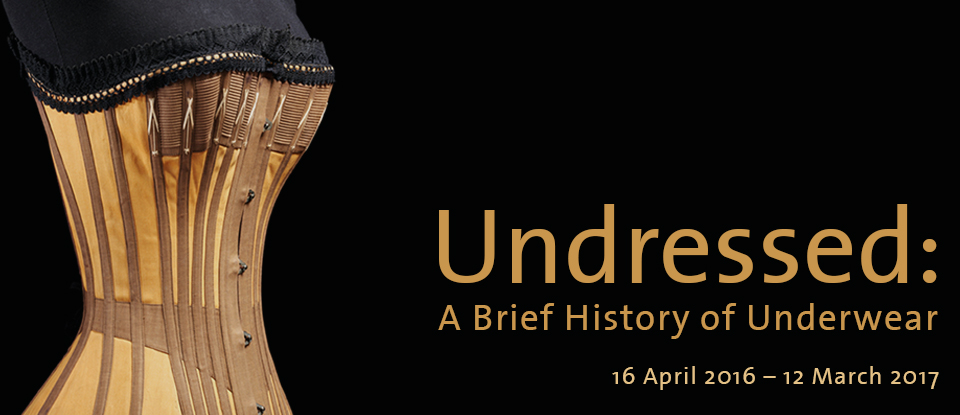BY: BRENNA PLADSEN
The latest Victoria & Albert exhibition opened on April 16. Titled Undressed, it features historical undergarments from the 18th century onwards, ending with modern lingerie and lingerie inspired garments. With an emphasis on gender equality and the demure but still evocative, title it seems to be positioned as much less salacious than the Fashion Institute of Technology's exhibition Exposed in 2014. Between the two, one linguistically aims to be a bit more reserved and modest. Undressed is more reliant on another cultural narrative, the "unmentionable" hidden and secret status of more mundane and everyday undergarments (beside the Victoria Secret billboards are the covert Spanx package). Both, though, speak to the pervasive and sexy narratives surrounding this category.
There is a robust and visible cultural narrative and we can see, even in the publicity, how the V&A and FIT have approached the same subject from different places, but created exhibitions that fundamentally, even in their naming, sit comfortably in a media field more strongly driven by the fashion industry. FIT focused on the uncovering and and increased literal visibility of undergarments, which makes sense given their location in a fashion school. The V&A's emphasis on the functional aspects of undergarments pushes back against the purely aesthetic appreciation of lingerie and the current fetishistic status of retro lingerie. I will admit, however, that this opinion is derived purely from the publicity available, so if anyone would like to visit and take me with you, I would be glad to argue this further.
 |
| Exhibition image from the V&A website. Source |
This point is slightly undermined by the fact that the V&A exhibition looks much more like a fancy lingerie store window than FIT's.
 |
| Exhibition photo from Exposed. photo by Jennifer Eberhart, from Examiner.com. Source |
 |
| Exhibition photo from Undressed. photo by Emma Davenport, from Worn Through. Source |
Returning to the mystique of underwear, corsets, in contrast to other undergarments, are technically difficult to create, requiring both specialized materials and potentially an engineering degree (as my own attempts will attest). Day-to-day undergarments also occupy a near similarly intimidating status for this amateur seamstress, even a simple triangle bra sits on my sewing wishlist, waiting for me to summon the guts and research nifty tips and tricks that make home-sewn lingerie accessible. So, if we're stuck buying lingerie from industrial sources because the skills to make it are generally lost, buying underwear also requires consuming the marketing myths used to sell it. If contemporary lingerie occupies this mythical status, it may explain why both exhibits begin with the 18th century. While it may be a question of available objects, this is the also when the corset created the silhouette that contemporary examples produce. There is a familiarity of form for contemporary audiences that is useful for interpretation. The triangulation of the scandalously seen or the secretly hidden with reliable entrance narratives generates a curiosity even if there are misconceptions to be addressed.
There is a robust and visible cultural narrative and we can see, even in the publicity, how the V&A and FIT have approached the same subject from different places, but created exhibitions that fundamentally, even in their naming, sit comfortably in a media field more strongly driven by the fashion industry. FIT focused on the uncovering and and increased literal visibility of undergarments, which makes sense given their location in a fashion school. The V&A's emphasis on the functional aspects of undergarments pushes back against the purely aesthetic appreciation of lingerie and the current fetishistic status of retro lingerie. I will admit, however, that this opinion is derived purely from the publicity available, so if anyone would like to visit and take me with you, I would be glad to argue this further.


No comments:
Post a Comment
Note: only a member of this blog may post a comment.